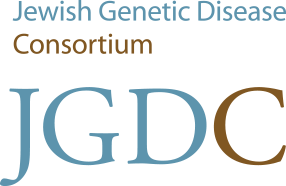The following article “Wading Deep Into the Genetic-Pool Controversy” by Jon Entine appeared in the “Jewish Exponent” in March 2008. It’s a fascinating perspective on race and genetic inheritance.
Wading Deep Into the Genetic-Pool Controversy
by Jon Entine, March 13, 2008
Since the horror of the Holocaust, Jews have been at the forefront of those debunking notions that they could be defined by blood ancestry, as a “race.”
The notion of race seemed to be dead as a scientific concept as recently as 2000, when the first sketch of the human genome was unveiled. “We are all, regardless of race, 99.9 percent the same,” President Clinton proclaimed. Then the uncomfortable nuances of science intervened.
In the 1960s, growing up in Cheltenham, my aunt, grandmother and mother died of diseases that we think originated as breast or ovarian cancers — tragic coincidences, we believed. But when my sister discovered a lump in her breast six years ago, a DNA test revealed that she carried a mutation on the BRCA2 gene. It’s one of three breast and ovarian cancer mutations that target Jews, and non-Jewish descendants of Jews, almost exclusively, and one of 40-some genetic disorders that disproportionately impact Ashkenazi Jews.
Most geneticists believe these three mutations trace to Jews who lived 1,000 or more years ago when European Jewry numbered less than 25,000 people. As the Jews of Europe passed through what geneticists call a “population bottleneck” and their numbers began to grow, these gene faults spread quickly, but remained within the tight-knit Ashkenazi community.
No one wants to resurrect pre-genetic notions of race in which people were ranked by characteristics. But scientists are committed to studying distinctive populations based on geography (Icelanders, Basques), culture (gypsies, Scottish Highlanders), or religion (Amish, Parsis), because insular groups hold the key to disease research.
Jews are considered one of the premier genetic goldmines. Since the founding of Ashkenazi Jewry, until recent decades, despite being scattered to winds of the world, the rate of non-Jewish lineages that have slipped into the Jewish gene pool, per generation, is estimated at 0.5 percent.
I, too, carry the BRCA2 mutation, and my 9-year-old daughter, the product of a mixed marriage, has a 50/50 chance of being a carrier. It’s difficult to trace this wayward gene as my family tree disappears into the fog of the Diaspora. Scientists can say for certain only that this cancer is a tragic signature of my Jewish ancestry. I am a Jew by DNA.
While the human genome map underscored that humans are more alike than different, the sequencing of the entire genome has ushered in a more precarious era. Geneticists are identifying chunks of DNA, known as haplotypes, passed on from group to group. These genetic blocs are like signatures.
I wrote about a slice of this controversy in Taboo: Why Black Athletes Dominate Sports and Why We’re Afraid to Talk About It (2000). Scientists now understand that evolutionary forces differ in varying terrains, which explains why body type and behavioral characteristics vary among ancestral populations.
Sport provides a vast trove of empirical data to prove this point. Eurasian whites are stronger, on average, than other population groups, which is the key reason why they dominate weight-lifting and field events. Those with primarily West African ancestry — such as African-Americans — have a different body type and physiology, primed more for sprinting and aerobic sports.
This has nothing to do with dated concepts of race, based on skin color; it’s about ancestry and population genetics.
Great Brain Debate
More recently, an understandably controversial debate has arisen over brain architecture. Three prominent scientists, all Christians, were intrigued by the remarkable success of Jews and their startlingly high scores on I.Q. tests, which scientists universally believe are heavily influenced by genetics.
Ashkenazi Jewish I.Q. averages between 107 and 117, while the world average is 100. Is it good genes or good mothers?
It could be both, if Henry Harpending and Jason Hardy of the University of Utah and independent scientist Gregory Cochran are to be believed. In a theory discussed in my newest book, Abraham’s Children: Race, Identity and the DNA of the Chosen People, they suggest that high Jewish I.Q. might be linked to the high incidence of Jewish neurological diseases.
The scientists identified 19 so-called “Jewish diseases,” including Tay-Sachs, Gaucher and breast cancer, that influence the enzyme pathways that guide neurological development. Single variations of a disease mutation may juice the brain, while two may cause crippling health problems.
And like a feedback loop, Jewish nurture may have reinforced Jewish nature. For centuries, high literacy was more heavily prized among Jews than in many other cultures.
The smartest, most literate male Jews set up arranged marriages to mate sons with the wealthiest and wisest daughters, ensuring the spread of “smart genes” — even if matches resulted in terrible diseases.
I reviewed this theory with dozens of geneticists. Not one dismissed it, but only a handful would discuss it on the record.
Finding links between Judaism and DNA, even flattering hints, is especially unnerving to Jews considering the lessons of Jewish history. But we can’t escape the fact that Judaism is a different kind of religion from Christianity or Islam. It’s not purely faith-based.
Judaism remains a rich tapestry with threads of faith, land and blood ancestry — a genetic as well as a cultural inheritance. The great paradox of biodiversity research is that the only way to understand how similar humans may be is to accept how profoundly we differ.
Jon Entine, an adjunct fellow of the American Enterprise Institute for Public Policy Research, will be speaking on Monday, March 17, at a meeting of the Jewish Genealogical Society of Philadelphia at Reform Congregation Keneseth Israel in Elkins Park.
